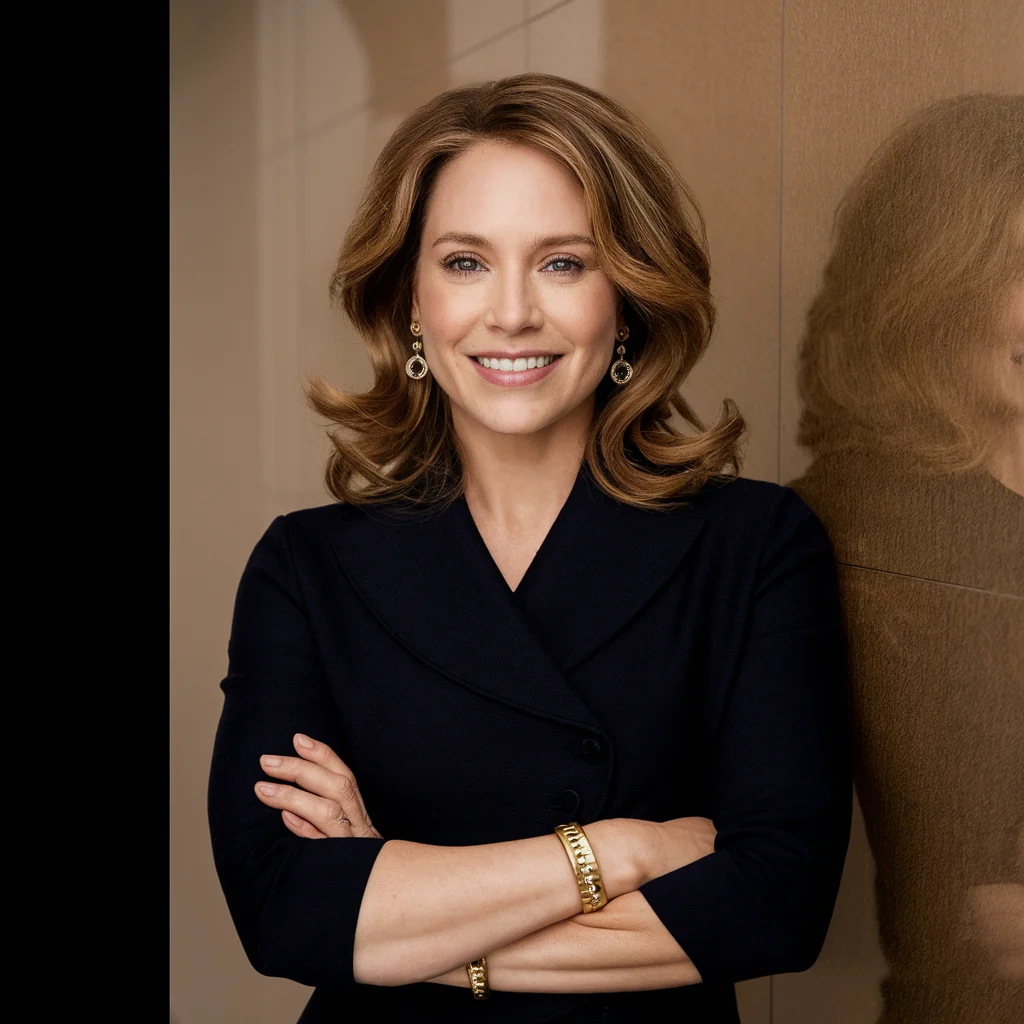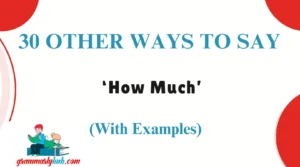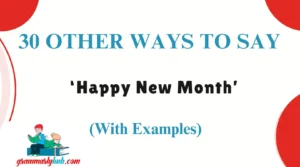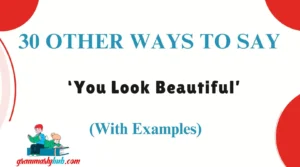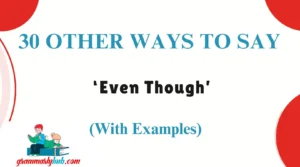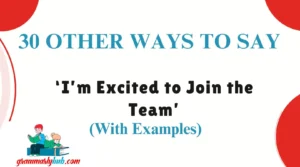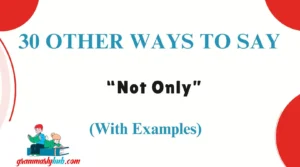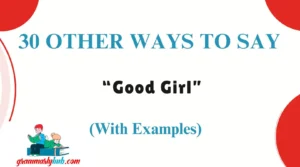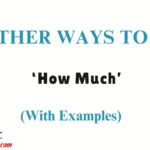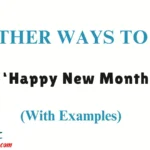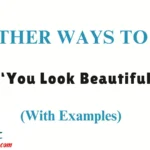When it comes to creating a welcoming atmosphere, choosing the right words can make all the difference. “Meet and greet” is a commonly used phrase, but there are many other ways to express the same idea that can feel more personal, engaging, or professional depending on the situation.
Finding the perfect alternative can elevate your message and resonate better with the audience, making them feel more valued and understood. In this article, we will explore 30 other ways to say “meet and greet”, with examples and helpful context to guide you on when and how to use them.
What Does “Meet and Greet” Mean?
Before diving into the alternatives, it’s essential to understand what “meet and greet” means. This phrase typically refers to an informal gathering or event where people are introduced to one another, often in a casual or professional setting.
The goal is to introduce individuals and foster a sense of community or connection. It’s often used in social and business contexts to set the tone for a welcoming, engaging experience.
When to Use “Meet and Greet”
“Meet and greet” is commonly used in both professional and casual settings. It’s appropriate for events where the primary goal is for people to meet each other, exchange pleasantries, and form initial impressions. Whether it’s at a corporate event, social gathering, or networking session, using this phrase sets an inviting and friendly tone.
Is It Professional/Polite to Say “Meet and Greet”?
Yes, “meet and greet” is generally professional and polite when used in appropriate contexts. It is a non-offensive, casual expression, perfect for situations where individuals are meeting for the first time. It’s polite without being overly formal, striking a balance that makes it suitable for both work and casual interactions.
Pros and Cons of Saying “Meet and Greet”
Pros:
- Easy to understand
- Friendly and approachable tone
- Widely recognized and accepted in both professional and casual settings
Cons:
- Overused in certain contexts
- May feel too casual in highly formal settings
- Can be too generic at times, lacking personality
“Meet and Greet”synonym
1. Introduction Session
2. Networking Event
3. Social Hour
4. Orientation Session
5. Welcome Gathering
6. Meet-Up
7. Client Introduction
8. Team Introduction
9. Kickoff Event
10. Fireside Chat
11. Icebreaker Event
12. Opening Reception
13. Community Mixer
14. First Impression Event
15. Introductory Gathering
16. Connection Circle
17. Friendly Welcome
18. Onboarding Meeting
19. Welcome Session
20. Coffee Chat
21. Meet the Team
22. Face-to-Face Introduction
23. Quick Connect
24. Say Hello Session
25. Networking Mixer
26. Opening Roundtable
27. Handshake Hour
28. Conversation Starter
29. Get-Acquainted Gathering
30. Friendly Meet-Up
1. Icebreaker Session
Definition: An interactive activity designed to help people introduce themselves and feel more comfortable.
Explanation: An icebreaker session helps ease the tension by encouraging participants to share fun facts or answer light questions.
Scenario Example: “During the first few minutes of the conference, we’ll kick things off with an icebreaker session to help everyone get acquainted.”
Worst Use: Using this term in a highly formal board meeting might seem too casual.
Tone: Friendly, informal.
2. Networking Opportunity
Definition: A chance to meet and interact with people in your field, typically for professional purposes.
Explanation: A networking opportunity emphasizes the professional connections that can be made.
Scenario Example: “This event is a great networking opportunity for professionals in the tech industry.”
Worst Use: Overusing this term for casual social events where networking isn’t the focus.
Tone: Professional, goal-oriented.
3. Introduction Event
Definition: A formal or casual event where individuals are introduced to one another.
Explanation: Introduction events often involve structured or semi-structured settings where attendees are formally introduced.
Scenario Example: “The introduction event at the conference will help participants get to know each other before the keynote speech.”
Worst Use: In informal social settings, this term might sound too stiff.
Tone: Formal, structured.
4. Meet-Up
Definition: A casual gathering of people for socializing or sharing common interests.
Explanation: Meet-up is ideal for casual, social contexts, and is frequently used in community events or hobby groups.
Scenario Example: “We’re organizing a meet-up for local entrepreneurs to share ideas and build connections.”
Worst Use: In highly professional environments, it may lack the necessary formality.
Tone: Casual, social.
5. Welcome Reception
Definition: A formal event held to greet and welcome guests.
Explanation: Welcome receptions are often used in professional or celebratory events to introduce attendees in a warm setting.
Scenario Example: “Join us for a welcome reception at the beginning of the conference, where you can meet the speakers and other participants.”
Worst Use: In very informal, impromptu meetings.
Tone: Formal, welcoming.
6. Casual Mixer
Definition: A laid-back event where people mingle and engage with one another.
Explanation: A casual mixer is ideal for informal settings where the goal is to facilitate conversations in a relaxed environment.
Scenario Example: “After the seminar, we’ll have a casual mixer to unwind and network.”
Worst Use: At events with a strict agenda or in corporate boardrooms.
Tone: Relaxed, social.
7. Social Hour
Definition: A short period of time for people to socialize, usually with drinks or appetizers.
Explanation: Social hour emphasizes a lighter, fun-filled environment where people can interact freely.
Scenario Example: “The social hour begins at 5 PM, followed by dinner and a guest speaker.”
Worst Use: At serious, formal meetings with no space for casual interaction.
Tone: Casual, friendly.
8. Welcome Gathering
Definition: A more relaxed version of a formal gathering where the focus is on introductions.
Explanation: Welcome gatherings focus on giving attendees a chance to meet and feel at ease in a welcoming environment.
Scenario Example: “The welcome gathering will be a perfect time to meet your fellow attendees before the seminar starts.”
Worst Use: In overly formal, structured environments.
Tone: Warm, inviting.
9. Casual Meet
Definition: A relaxed event where people are encouraged to meet and chat.
Explanation: A casual meet is often spontaneous and informal, typically used for low-pressure situations.
Scenario Example: “We’re hosting a casual meet this Friday where anyone interested can come and chat.”
Worst Use: For highly organized or formal events where structure is required.
Tone: Informal, spontaneous.
10. Group Introduction
Definition: A more structured form of introductions in a group setting.
Explanation: Group introductions are often organized and follow a formal process.
Scenario Example: “The event will start with a group introduction, where each participant will briefly introduce themselves.”
Worst Use: In small, informal gatherings where introductions are less formal.
Tone: Formal, organized.
11. Icebreaker Activity
Definition: A fun and engaging activity designed to help people relax and introduce themselves.
Explanation: Icebreaker activities are typically short and fun, intended to get people talking and comfortable in a group.
Scenario Example: “We’ll start the event with an icebreaker activity to help everyone feel at ease and get to know each other.”
Worst Use: In highly serious or formal situations, where such activities might seem out of place.
Tone: Casual, engaging.
12. Community Event
Definition: A gathering of people in a community to interact and connect.
Explanation: A community event focuses on bringing people together from the same community, whether social or professional, to engage in meaningful interactions.
Scenario Example: “The community event will allow you to meet like-minded individuals and discuss potential collaborations.”
Worst Use: In corporate settings where the focus is strictly professional.
Tone: Inclusive, welcoming.
13. Social Mixer
Definition: A relaxed gathering where individuals meet and mingle informally.
Explanation: A social mixer creates an environment for people to meet, mingle, and engage in conversation, often with drinks or food.
Scenario Example: “Come join us at the social mixer where you’ll have the chance to meet other professionals in your industry.”
Worst Use: At highly formal business events with a strict agenda.
Tone: Casual, engaging.
14. Meet-Up Group
Definition: A group of people gathering for a specific activity or purpose, often around shared interests.
Explanation: A meet-up group is typically informal and centered around a shared hobby or interest, making it ideal for casual interactions.
Scenario Example: “Our meet-up group for writers will gather this Saturday to discuss our latest projects.”
Worst Use: At formal conferences or meetings where no specific shared interest exists.
Tone: Relaxed, social.
15. Networking Reception
Definition: A gathering for individuals to interact, typically in a professional context.
Explanation: A networking reception is specifically designed for attendees to make professional connections in a more casual setting.
Scenario Example: “Following the panel discussion, we will host a networking reception for you to meet and talk with industry leaders.”
Worst Use: At personal social events where networking isn’t the primary goal.
Tone: Professional, formal.
16. Informal Gathering
Definition: A casual and relaxed get-together without a rigid structure.
Explanation: Informal gatherings are laid-back events that focus on casual conversation and connecting with others.
Scenario Example: “We’re having an informal gathering for local entrepreneurs to share ideas and connect over coffee.”
Worst Use: At large, formal corporate events where a more structured approach is needed.
Tone: Casual, comfortable.
17. Professional Introduction
Definition: A more formal version of an introduction, typically used in business settings.
Explanation: A professional introduction is a structured and polite way to present individuals, often in a work or industry-specific context.
Scenario Example: “The conference will begin with a professional introduction of all the keynote speakers.”
Worst Use: At casual or social events where a formal tone is unnecessary.
Tone: Formal, respectful.
18. Social Gathering
Definition: A get-together of individuals for social interaction.
Explanation: A social gathering typically refers to an event where people interact for leisure, fun, or community-building purposes.
Scenario Example: “This weekend’s social gathering will be the perfect opportunity to meet new people and make connections.”
Worst Use: In a professional environment focused on business or structured activities.
Tone: Friendly, inclusive.
19. Team Building Event
Definition: An event designed to help people within a team interact and build stronger working relationships.
Explanation: A team building event usually focuses on activities designed to strengthen bonds and enhance cooperation among group members.
Scenario Example: “Our team-building event will involve a series of exercises that encourage collaboration and trust-building.”
Worst Use: In environments where participants are not working within a specific team.
Tone: Cooperative, purposeful.
20. Reception Mixer
Definition: A type of event combining formal reception activities with social mingling.
Explanation: The reception mixer allows for formal introductions followed by more informal mingling and conversation.
Scenario Example: “The evening will feature a reception mixer where you can meet other guests and enjoy light appetizers.”
Worst Use: In highly structured or academic settings where social mingling is not the focus.
Tone: Professional, social.
.
21. Client Welcome Session
Definition: A scheduled time to warmly introduce a client to your business or team.
Explanation: A client welcome session is ideal in professional settings, showing that you value the client’s presence and are eager to establish rapport.
Scenario Example: “We’ve arranged a client welcome session to ensure you’re familiar with our process and team members.”
Worst Use: At events that aren’t client-focused or where a broad audience is involved.
Tone: Professional, respectful.
22. Orientation Gathering
Definition: A session meant to introduce new members to a team, organization, or program.
Explanation: An orientation gathering helps new attendees feel comfortable and understand their environment.
Scenario Example: “All interns must attend the orientation gathering on Monday to learn about our policies.”
Worst Use: In purely social events where formal onboarding isn’t relevant.
Tone: Structured, welcoming.
23. Welcome Celebration
Definition: A joyful event planned to honor and receive someone new.
Explanation: A welcome celebration adds a cheerful, heartfelt tone to the idea of a simple introduction.
Scenario Example: “Join us for a welcome celebration to meet our new department head!”
Worst Use: In strictly formal or corporate environments where celebrations are inappropriate.
Tone: Joyful, inviting.
24. Company Introduction
Definition: A formal meeting or document that presents a company’s team, values, or structure to new stakeholders.
Explanation: Company introductions are structured and typically used for new hires, partners, or clients.
Scenario Example: “We’ll begin our session with a quick company introduction before diving into today’s agenda.”
Worst Use: In casual or small-scale social gatherings.
Tone: Professional, clear.
25. Connect & Chat
Definition: A casual, friendly moment to build connection and hold light conversations.
Explanation: A connect & chat session suggests approachability and openness, encouraging easy interactions.
Scenario Example: “Feel free to swing by for our connect & chat break—coffee and smiles included!”
Worst Use: In rigid, formal, or legal settings.
Tone: Friendly, casual.
26. Meet-Up Moment
Definition: A brief, informal time for attendees to introduce themselves.
Explanation: A meet-up moment implies spontaneity and ease, making it great for relaxed events.
Scenario Example: “Before we start, we’ll have a quick meet-up moment so everyone knows who’s in the room.”
Worst Use: When detailed, in-depth introductions are required.
Tone: Light, breezy.
27. Team Mixer
Definition: A casual event for coworkers or teams to get to know each other better.
Explanation: A team mixer often involves food, drinks, and relaxed conversation to boost camaraderie.
Scenario Example: “We’re hosting a team mixer after hours so everyone can unwind and connect.”
Worst Use: In events involving external stakeholders or formality.
Tone: Casual, social.
28. Staff Introduction Round
Definition: A structured way to present staff to new hires or guests.
Explanation: A staff introduction round ensures everyone is formally introduced and recognized in a professional way.
Scenario Example: “Let’s begin with a staff introduction round so you know who’s who in the department.”
Worst Use: At casual social events or parties.
Tone: Professional, orderly.
29. Interactive Welcome
Definition: A dynamic greeting experience that encourages participation and engagement.
Explanation: An interactive welcome often includes games, name tags, or prompts to foster active participation.
Scenario Example: “Expect an interactive welcome with activities designed to help you meet your neighbors.”
Worst Use: For audiences that prefer a traditional or low-key greeting.
Tone: Fun, inclusive.
30. Say Hello Session
Definition: A lighthearted event where everyone gets a moment to introduce themselves.
Explanation: A say hello session adds a simple, cheerful twist to introductions.
Scenario Example: “We’ll kick off the event with a brief say hello session so everyone feels acknowledged.”
Worst Use: At formal events requiring structured presentations.
Tone: Friendly, simple.
FAQs
1. Can I use alternatives to “meet and greet” in professional emails?
Yes, using alternatives like “introduction session”, “networking event”, or “welcome gathering” in emails can add a more professional tone and suit specific audiences or intentions.
2. What’s the best friendly substitute for “meet and greet”?
If you’re aiming for warmth, try “connect & chat” or “say hello session.” These feel more inviting and relaxed, perfect for casual or team-building settings.
3. Is “meet and greet” too casual for corporate events?
It can be, depending on the audience. Alternatives like “orientation gathering”, “client welcome session”, or “company introduction” sound more formal and polished.
4. Which phrase should I use when introducing a new employee?
Consider using “team introduction”, “welcome session”, or “staff presentation”—they strike the right professional balance while being welcoming.
5. Can these phrases be used in virtual events or Zoom meetings?
Absolutely. Phrases like “virtual introduction round”, “online mixer”, or “interactive welcome” adapt well to digital formats and maintain engagement.
Conclusion
Finding the right words to replace “meet and greet” can help you speak with more intention, warmth, and clarity. Whether you’re hosting a formal event, running a team session, or just welcoming someone with care, these thoughtful alternatives bring a human touch to your communication.
Each phrase carries its own tone, from professional to playful, allowing you to better match your message to the moment. By using these diverse options, your language becomes more inclusive, meaningful, and truly memorable. 🌟

Welcome to GrammarlyHub, your trusted resource for writing clarity, grammar insights, and language tools. Founded by Mia Rose, a passionate writer and language enthusiast, GrammarlyHub is dedicated to helping students, professionals, and creatives write with confidence and precision.

